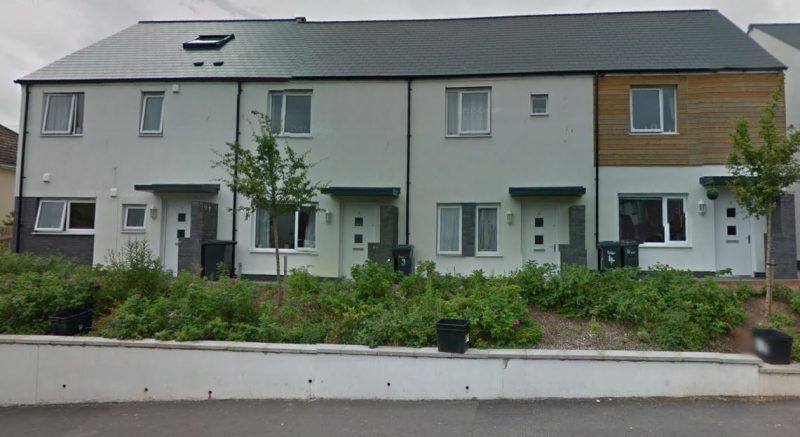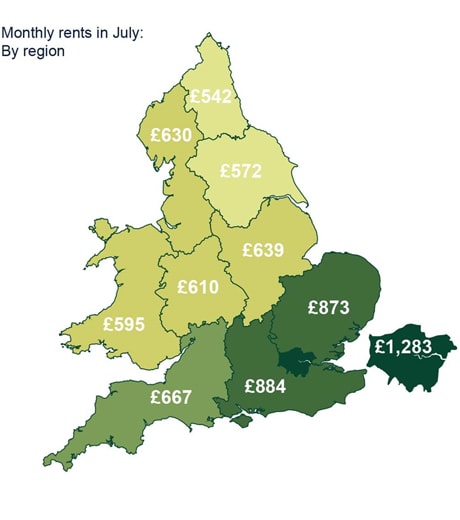PRA Changes For Portfolio Landlords 2025

Changes set out by the Prudential Regulatory Authority (PRA) will come into effect on September 30th 2017. It is applicable to landlords with four or more properties and will have an effect on any new buy-to-let mortgages and refinancing of existing properties after the changes take effect.
What’s changing?
Property finance is currently assessed on an individual basis. That’s for both the applicant and the property. The value of the property is assessed and then the finance is approved based on the loan to value the lender is offering, such as a 75% LTV or less.
From September 30th, applicants with four or more, or buying their fourth property…lenders won’t be able to assess and approve buy-to-let mortgages on an individual basis. Part of the assessment will involve assessing your other finance arrangements across all lenders you hold buy-to-let mortgages with.
This is going to increase the length of time it takes to get a BTL mortgage approved, due to more time being required in the assessment process and longer after that for the underwriting of the finance terms.
As far as costing goes, it may be that BTL mortgage rates of portfolio landlords could increase by a percentage point or perhaps half a percentage point. That’d be dependent on how lenders change their terms. Some may opt to increase the interest rates, whereas others may have a higher booking/arrangement fee to account for the time spent assessing the application and then arranging the finance.
What will I need to be approved for A BTL mortgage after September 30th?
Landlords with four or more properties will have the liquidity of their business assessed during the application process. Lenders will be treating portfolio landlords just the same as they treat any self-employed mortgage application. You’ll be required to provide your end-of-year accounts, profits, and losses, and verify your income.

It will be tougher than a contractor mortgage because each property in your portfolio is assessed as an individual asset. Hold any properties on buy-to-let finance where it’s not raising enough capital to repay the interest on the mortgage. Instead, you rely on other profitable property rentals to cover the repayments. You may find getting new buy-to-let finance arrangements difficult. Each property in your portfolio should be consistently profitable.
That will be the most challenging part of this change. The individual assessment of all your properties is critical because it’s not unusual for one property to make less than others and then use the more profitable ventures to cover the shortfall.
There are a variety of reasons why landlords’ income fluctuates. Some properties go through a spell of needing a lot of maintenance and repairs, or it could be a long-term tenant that’s just moved out, leaving your property vacant.
The finances of every property change every year. There is no fixed cost for maintenance or any other expenditure. Sometimes, it’s higher, and sometimes, you make a loss.
Just the one property making a loss could impact your chances of getting a new mortgage approved to increase your portfolio or refinance any existing property should it have increased in value.
The Financial Impact on Private Portfolio Landlords
The past few years have definitely made it tougher on private landlords. There are far more restrictions and regulatory overview of the private residential lease market that’s making it next to impossible for some landlords to continue business as usual. Some are opting to sell up and leave their rental properties.
However, that could also cost a lot more than expected and should be done with guidance from your accountant or financial advisor because having four or more properties sold off in the same financial year will be likely to trigger a higher capital gains tax rate of 28%. This could be avoided by staggering the sales of properties over multiple financial years so it will need an exit plan carefully drawn up and executed so you can exit in the most tax-efficient way possible. If that is something you plan to do.
How many landlords are expected to be affected?
Very few landlords will be impeded by this latest change, but those who are will be severely affected.
Data from 2010 showed that just 3% of private landlords had more than five properties. However, that small fraction of landlords accounted for 22% of the total properties in the private rental market.
The changes aren’t likely to impact the lending process much for landlords with just four properties or slightly more. Perhaps the costs will increase by a percentage point or half a percentage point because of the longer application process. Lenders are likely to raise prices to account for the time spent assessing buy-to-let mortgage applications and then more time in the underwriting process because there are more properties to assess.
There will be a major impact on larger portfolio landlords, such as those who have invested for years in building their portfolios. The Telegraph wrote about one landlord’s situation: He’s built his portfolio of 37 properties over almost 30 years and now reckons it could take just as long to sell them off.
Selling off many properties in one financial year leaves portfolio landlords vulnerable to the higher rate of capital gains tax of 28%, as mentioned above, which is why a staggered sales approach would be required by most to exit in the most tax-efficient way possible.
The capital gains exception is just £11,300, which is far too low for any investor holding more than four properties. In addition, tax relief on mortgage interest on buy-to-let mortgages is being gradually phased out and will not be tax deductible by 2020. This additional cost will be assessed during the affordability assessment and stress testing on BTL mortgages from September 30th 2017.
Why are Landlords being targeted?
There are two main reasons the BTL mortgage market is seeing regulations strengthened by the PRA, which is part of the Bank of England. The Bank of England’s interest is to reduce risky lending/borrowing, making it more challenging for Buy-to-Let investors. The other reason, as Reuters pointed out, is the “Chancellor of the Exchequer George Osborne is squeezing more tax from buy-to-let (BTL) investments, partly to help fund incentives for new homeowners”.
The government have committed to making new homes affordable. One is through the New Homes Bonus and another is the First Time Buyer Scheme due to come into effect in 2018.
What appears to be happening now is that landlords are seeing their taxes increased in order to follow through on the commitment to affordable housing. This funding will then be used to support mortgage applications for first-time buyers and home movers.
Can Buy To Let Landlords release equity from their properties with a homeowner loan in 2025?
There are many lenders that offer homeowner bad credit loans to landlords with bad credit and substantial property portfolios.
An In-depth Look at Secured Loans and RIO Mortgages in the UK
Secured loans and Retirement Interest-Only (RIO) mortgages are intricate financial instruments that cater to different needs and circumstances. As the UK’s financial landscape becomes increasingly diverse, these two tools have emerged as viable solutions for various financing and property-related needs. Let’s delve into these topics for a comprehensive understanding.
Secured Loans: Understanding the Basics in 2025
At its core, a bad credit joint applicant secured loan is a form of borrowing where the borrower pledges an asset, usually a property, as collateral for the loan. This collateral acts as a security net for the lender, ensuring they can recoup their money if the borrower defaults on the repayment.
There are several advantages to secured loans. Firstly, due to the additional security provided by the collateral, lenders are often more willing to lend larger amounts over extended periods. This can make secured loans ideal for significant expenditures such as home improvements or debt consolidation. Furthermore, those with less-than-perfect credit histories may find it easier to secure a loan if they can provide collateral.
However, it’s paramount to proceed with caution. If borrowers fail to repay, they risk losing the asset they’ve secured against the loan. This is often their home.
United Trust Bank Second Mortgage
United Trust Bank stands out among the many institutions offering secured loans, especially with its second mortgage offerings. Second mortgages are a subtype of secured loans where borrowers can tap into the equity of their homes. Before taking such a step, it’s crucial to explore United Trust Bank secured loans in detail to understand their terms, conditions, and potential implications.
Retirement Interest-Only (RIO) Mortgages: A Closer Look
RIO mortgages are a relatively newer introduction to the UK financial market. They cater specifically to older borrowers, typically retirees, offering them a means to release equity from their homes while only requiring them to pay back the interest monthly.
Portfolio Landlord Mortgage Rates 2025
The best portfolio landlord mortgage rates are usually offered by the big banks like Lloyds, Barclays and HSBC. This type of funding is very helpful to buy run down houses for sale London for cash, as run down homes are hard to mortgage.
The primary benefit of RIO mortgages is that they can provide retirees with additional income, leveraging the value of their property without the need to downsize. The loan’s principal is typically repaid when the property is sold, which might be after the homeowner passes away or decides to move into long-term care.
Remortgages For Over 60S
As the financial landscape shifts and adjusts, so do the options available to older borrowers. Those considering mortgages over 70 might find remortgaging as a viable route. This approach can enable them to renegotiate terms, potentially securing better interest rates or tapping into their home’s equity for various purposes.
Best Remortgage Rates Uk
For homeowners looking to remortgage, the quest is often about securing the best rates. The UK’s dynamic market presents a myriad of choices, but it’s always wise to stay updated on the best remortgage rates uk. These can offer substantial savings over the loan’s duration, providing both financial relief and stability.
Fixed Rate Loans
Consistency is often a sought-after feature when it comes to loans. Fixed-rate loans offer borrowers the certainty of consistent repayments throughout the loan’s tenure. By ensuring that the interest rate remains unchanged, these loans can be an excellent choice for those looking to budget effectively. For insights into current market trends and offerings, potential borrowers might want to explore fixed rate loans in depth.
Equity Release For Under 55
Equity release isn’t just for the elderly. There are schemes tailored for those under 55, providing younger homeowners an avenue to tap into their property’s value. For more details on what this entails and the potential amounts one could release, the equity release under 55 segment is worth a thorough examination.
Mortgages For Pensioners
Age shouldn’t be a barrier to financial autonomy. Older borrowers, including pensioners, have unique mortgage needs. Recognizing this, the market now offers specific products tailored to their circumstances. For those interested in understanding the nuances and options available, a deep dive into mortgages for older borrowers is highly recommended.
